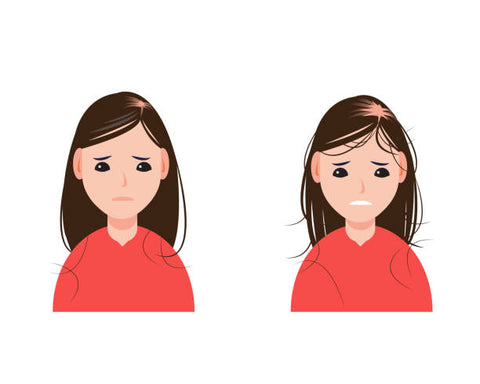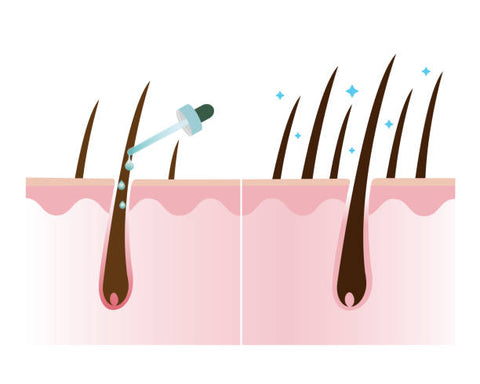What is Hair Shaft?
The hair shaft is the part of the hair that is visible above the skin. It is composed of three layers: the cuticle, the cortex, and the medulla. The cuticle is the outermost layer and is made up of a single layer of flat, overlapping cells. The cortex is the middle layer and is composed of keratin-filled cells that give the hair shaft its strength and elasticity. The medulla is the innermost layer and is composed of loosely packed cells.
The hair shaft also contains natural oils and pigments, which give it its color and texture. The oils help to protect the hair shaft from damage, while the pigments give the hair its natural color. The shape of the hair shaft also contributes to its texture and appearance.
The structure and composition of the hair shaft can be affected by a variety of factors, such as genetics, diet, and exposure to the environment. Hair can become brittle and weak due to excessive heat styling, chemical treatments, and environmental pollutants. In addition, certain medical conditions and medications can also cause changes to the hair shaft.
Functions of hair shaft
The hair shaft is the part of the hair that is visible above the scalp. It is responsible for providing the strength, texture, color, and style of your hair.
1. Strength: The hair shaft is composed of a protein called keratin. This protein gives the hair its strength and prevents it from breaking.
2. Texture: The thickness of the hair shaft determines the texture of the hair. Thicker hair shafts will create a coarser texture, while thinner ones will create a softer feel.
3. Color: The hair shaft also contains melanin, which is responsible for the color of the hair. The more melanin present, the darker the hair will be.
4. Style: The shape of the hair shaft can be manipulated to create different styles. The shape of the hair shaft can be altered with the use of chemical treatments, such as perms, or mechanical treatments, such as curling or straightening.
The hair shaft is an important part of the hair, as it provides the strength, texture, color, and style of the hair. It is important to take care of the hair shaft by using the appropriate products and treatments to ensure that the hair remains healthy and strong.

What is hair shaft disorder?
A hair shaft disorder is a condition that affects the hair shaft, resulting in abnormal hair growth, texture, or color. These disorders can be caused by genetic factors, environmental factors, or a combination of both. Common hair shaft disorders include trichorrhexis nodosa, alopecia areata, and telogen effluvium.
Trichorrhexis nodosa is a disorder characterized by fragile, broken hairs that have a knot-like appearance. The cause of this disorder is unknown, but it is thought to be related to genetic factors. This disorder often affects people with fine or curly hair.
Alopecia areata is an autoimmune disorder that causes patchy hair loss. This disorder can affect both men and women of any age. It is thought to be caused by a combination of genetic and environmental factors.
Telogen effluvium is a disorder that causes temporary hair loss. This disorder is caused by a disruption in the hair growth cycle, which can be caused by a variety of factors, including stress, nutritional deficiencies, medications, and hormonal imbalances.
If you suspect that you have a hair shaft disorder, it is important to consult your doctor or dermatologist. Treatment for hair shaft disorders will vary depending on the cause and severity of the condition. Treatment options may include topical medications, light therapy, and lifestyle changes.
Symptoms
Symptoms of hair shaft disorders may include:
1. Hair loss
2. Fragile or brittle hair
3. Hair that breaks easily
4. Split ends
5. Tangled or matted hair
6. Abnormal hair texture
7. Unusual hair color
8. Itchy scalp
Treatments for hair shaft disorder
1. Using a gentle shampoo: Using a gentle shampoo that is specifically designed for your hair type can help reduce the symptoms of a hair shaft disorder.
2. Applying conditioner: Applying a conditioner to your hair after shampooing can help to reduce the symptoms of a hair shaft disorder.
3. Avoiding harsh products: Avoiding harsh styling products and using natural-based products can help to reduce the damage to your hair.
4. Applying nourishing oils: Applying nourishing oils such as coconut oil, argan oil, avocado oil, or jojoba oil can help to promote healthy hair growth.
5. Eating a balanced diet: Eating a balanced diet that includes essential vitamins and minerals, such as vitamin C, vitamin E, and zinc, can help to promote healthy hair growth.
6. Avoiding heat styling: Avoiding heat styling tools such as hair dryers, curling irons, and flat irons can help to reduce the damage to your hair shaft.
7. Reducing stress: Reducing stress levels can help to promote healthy hair growth.
Simplify Your Choices: Product Suggestions
APPECIA-F5% Minoxidil Finasteride Topical Solution
Imxia 10 Minoxidil Topical Solution For Hair Loss And Hair Growth












